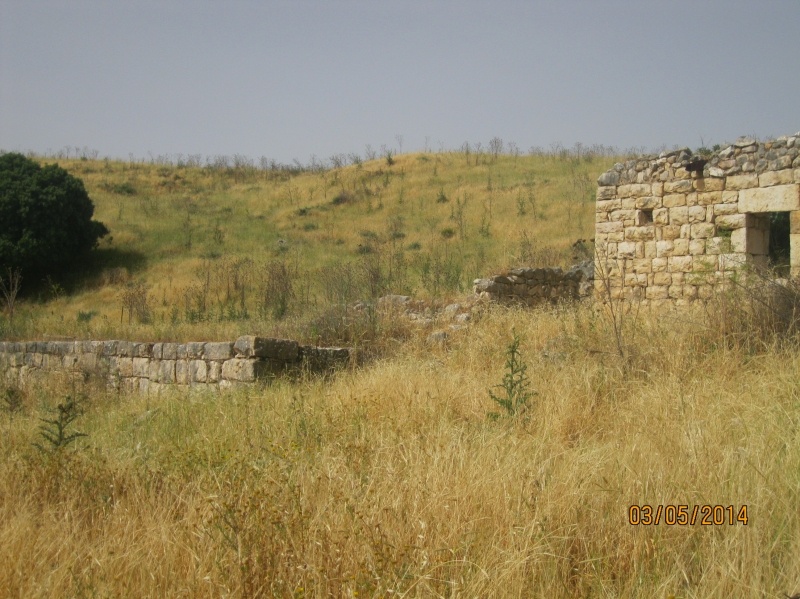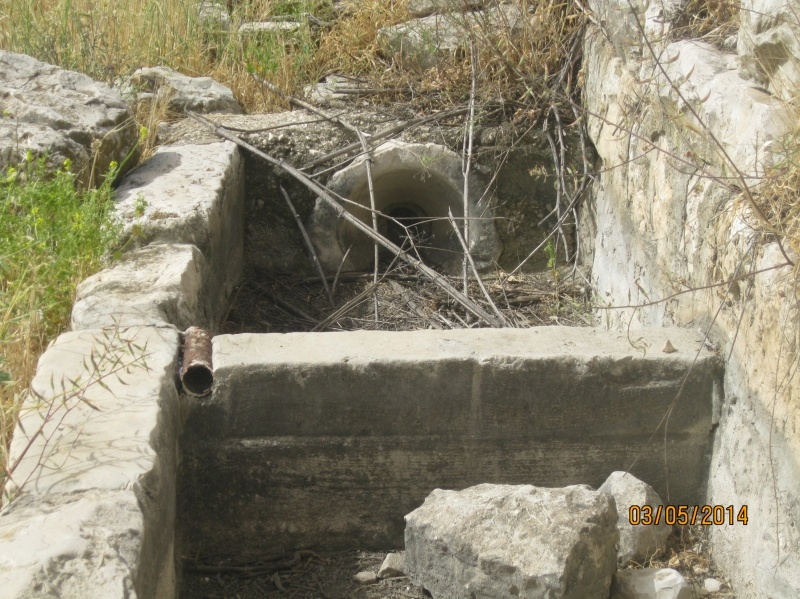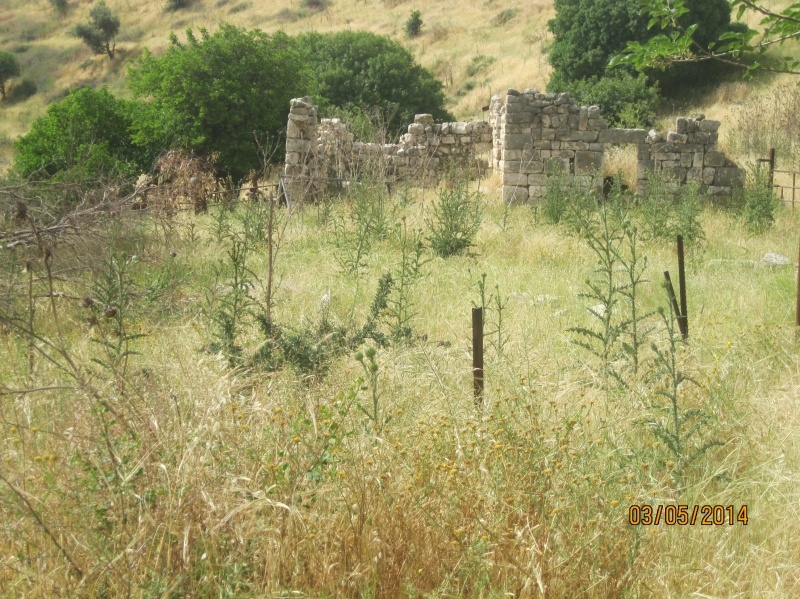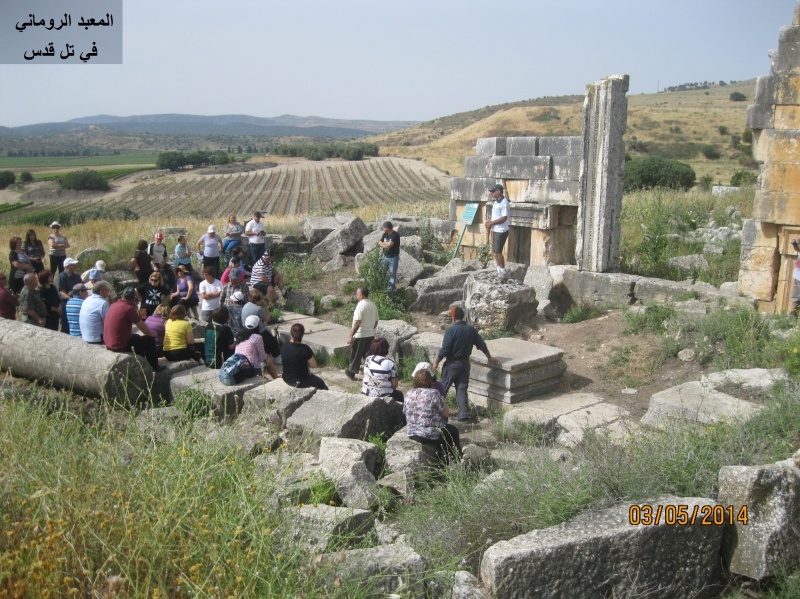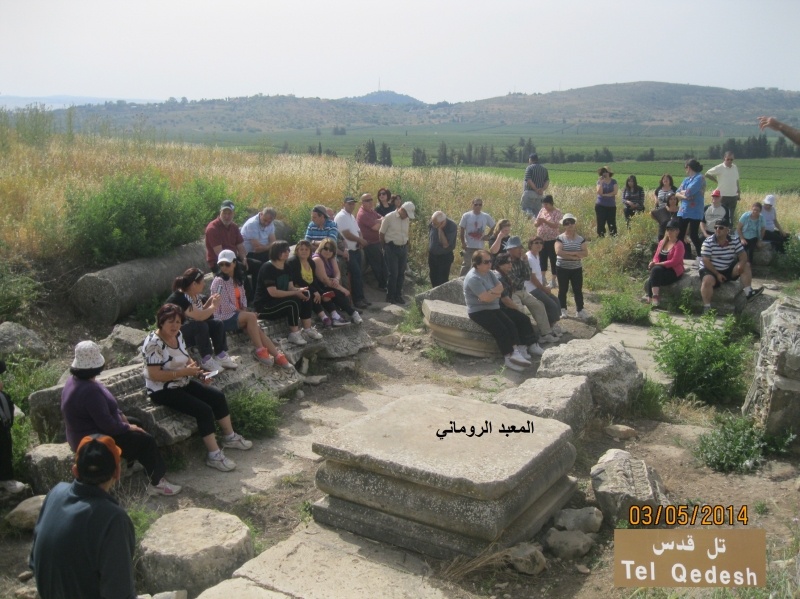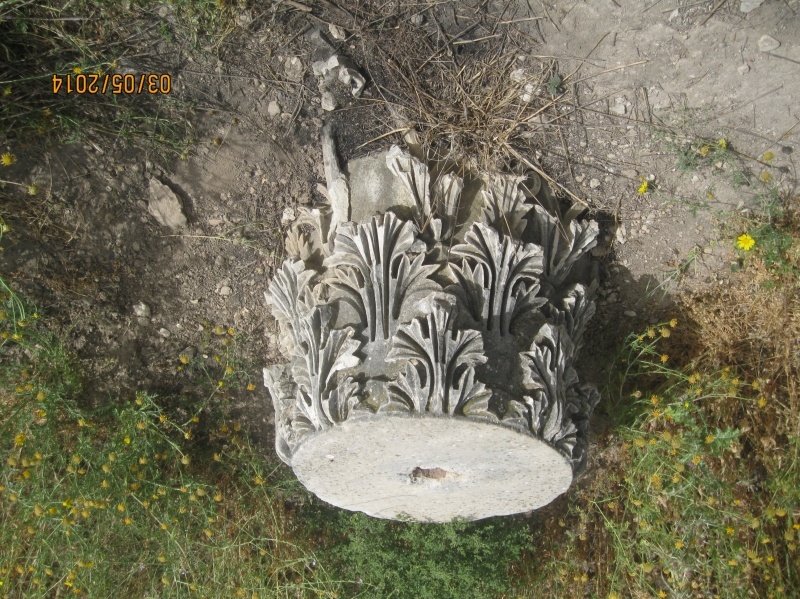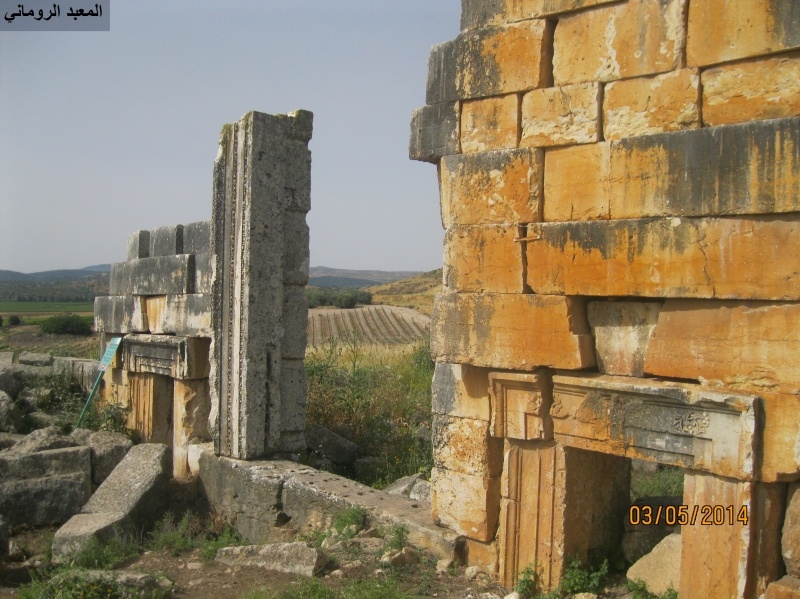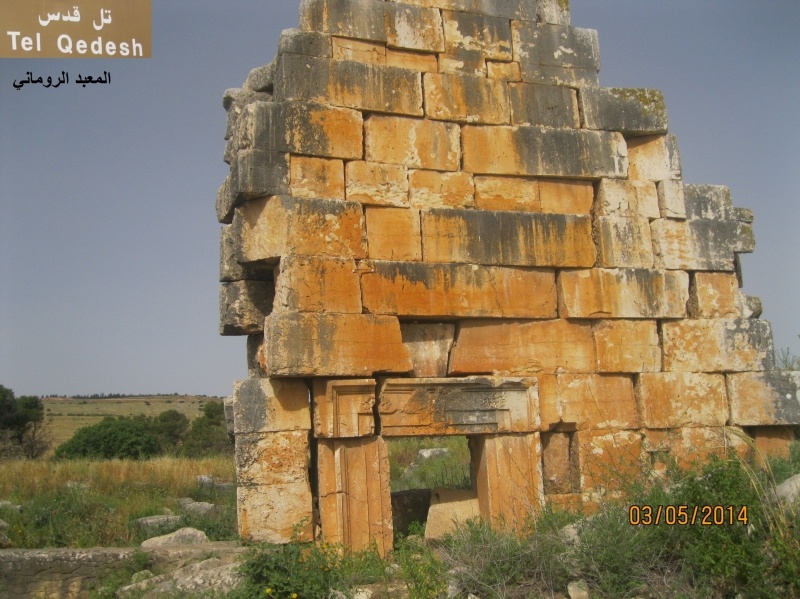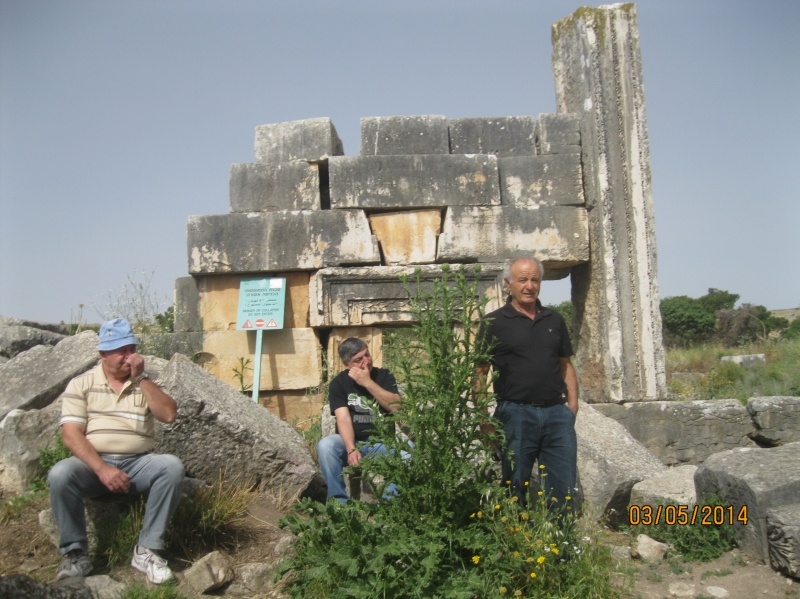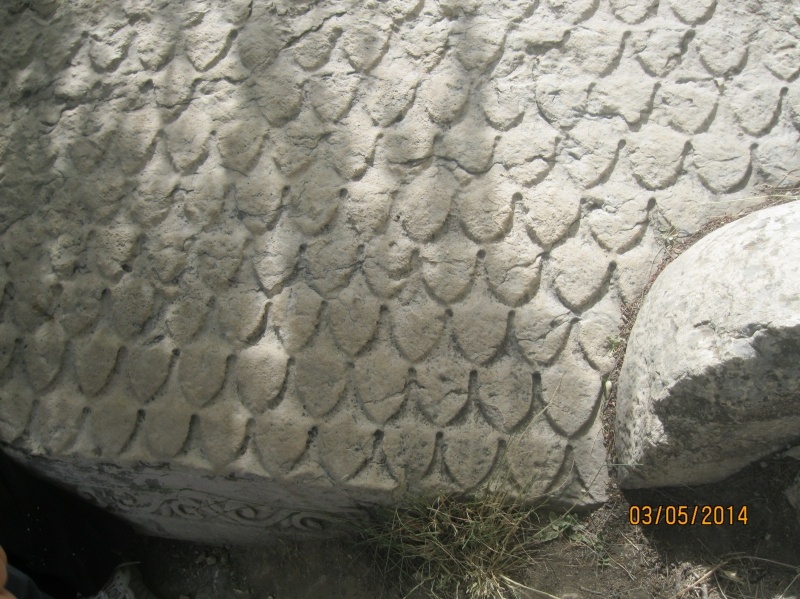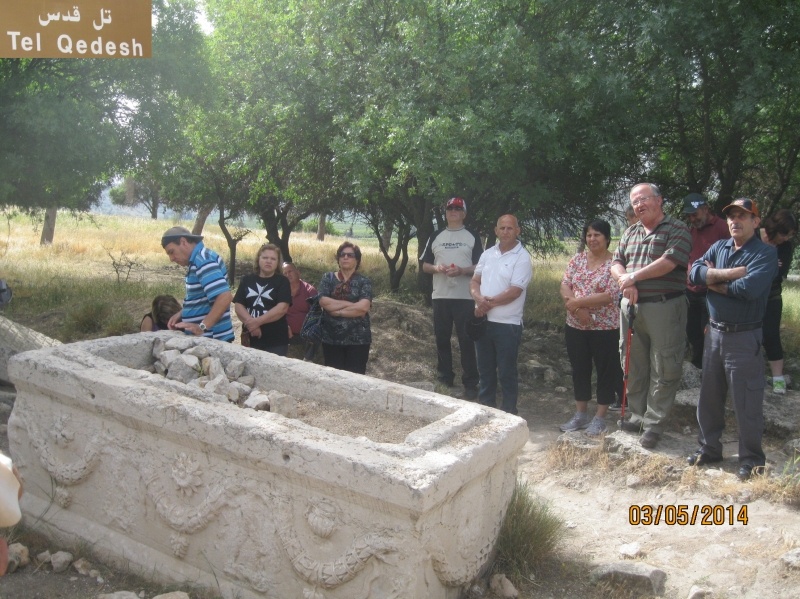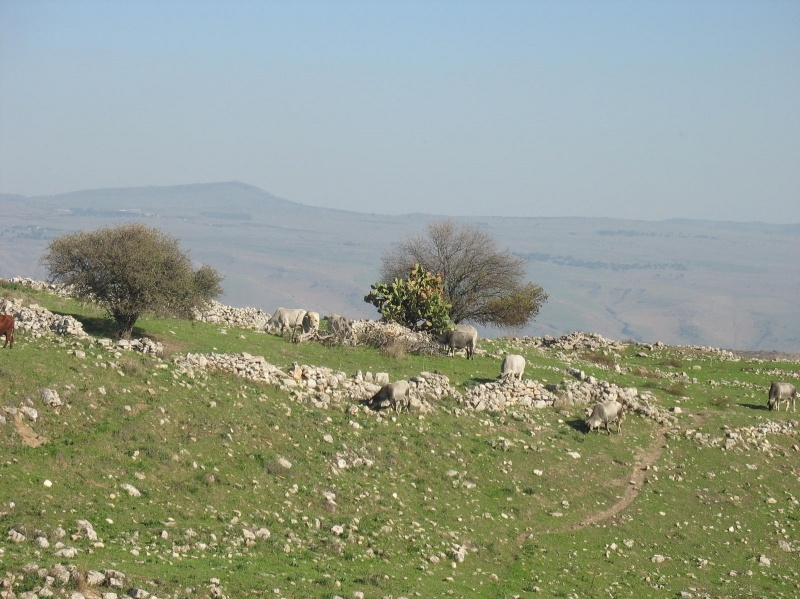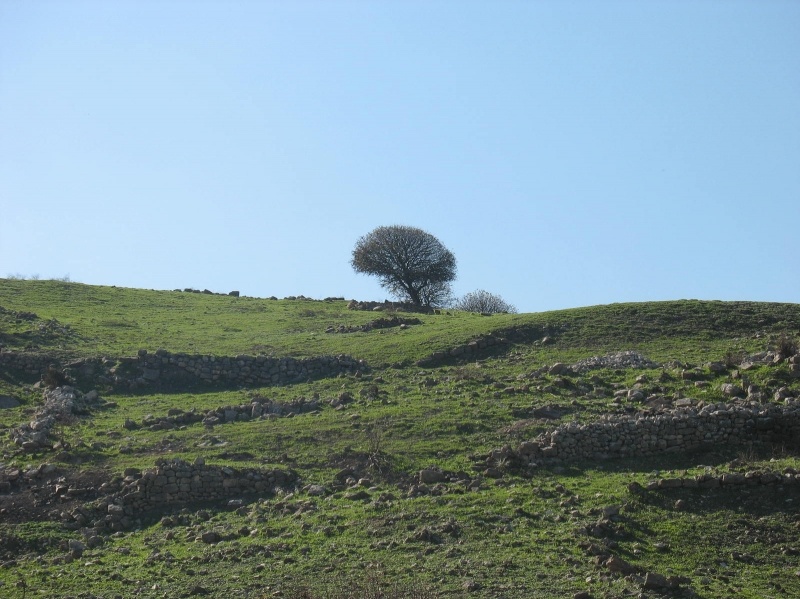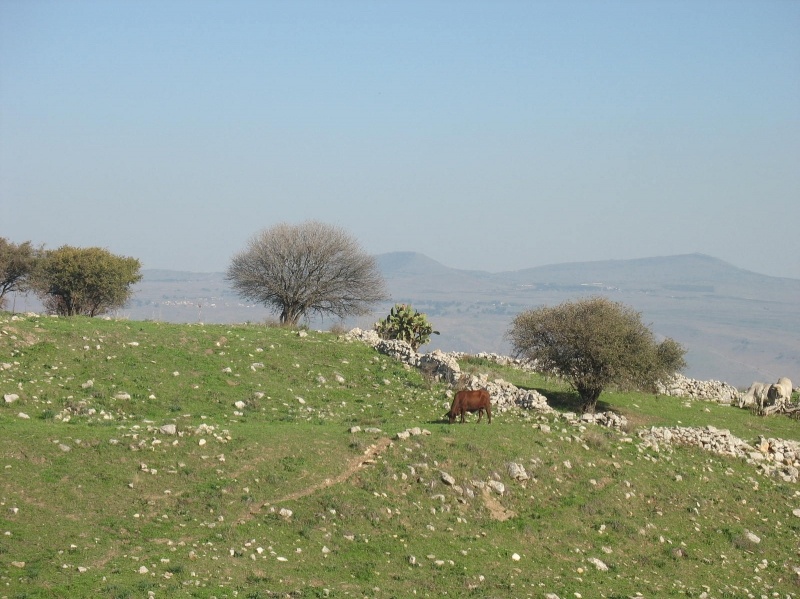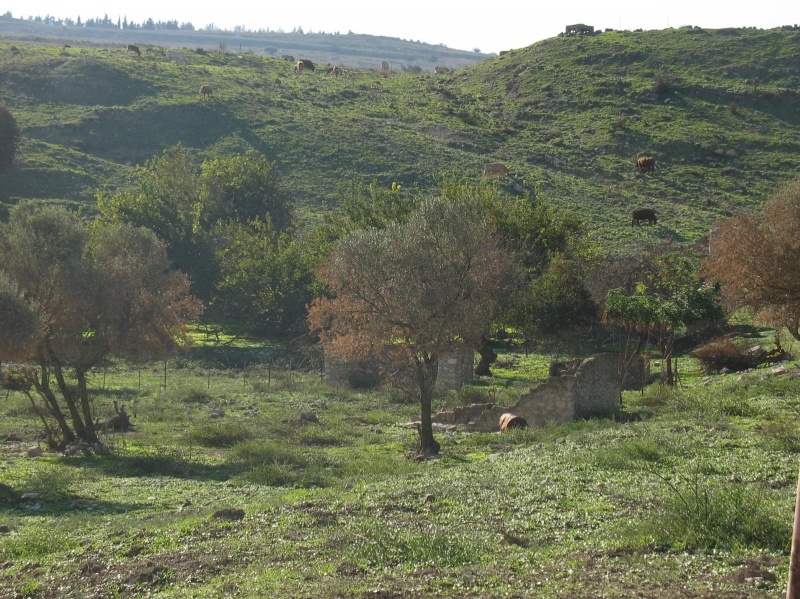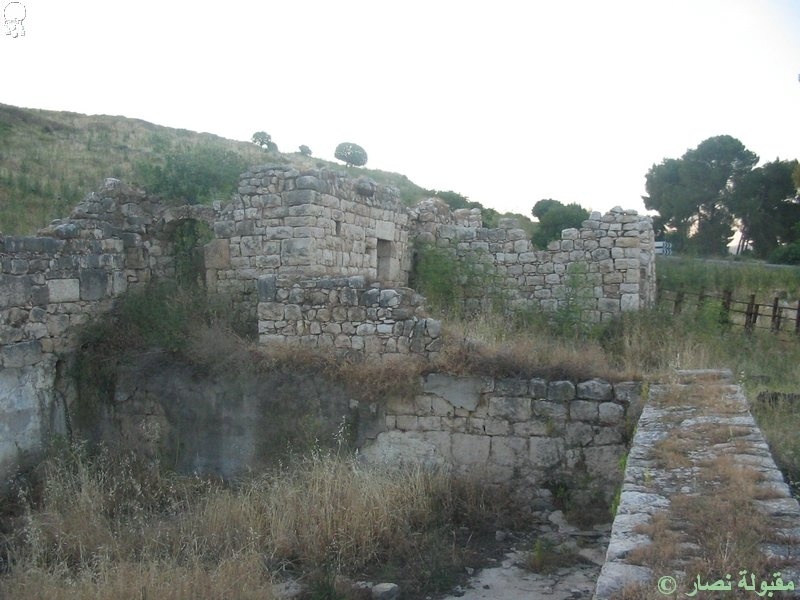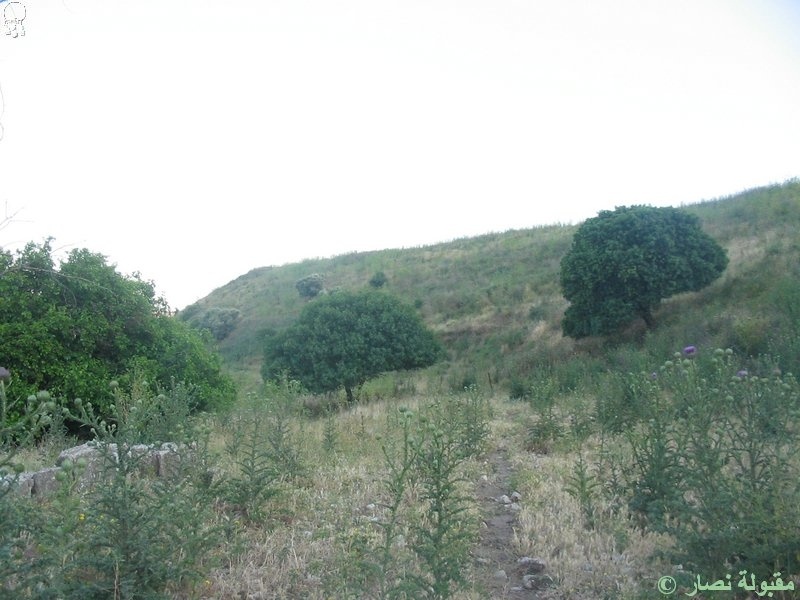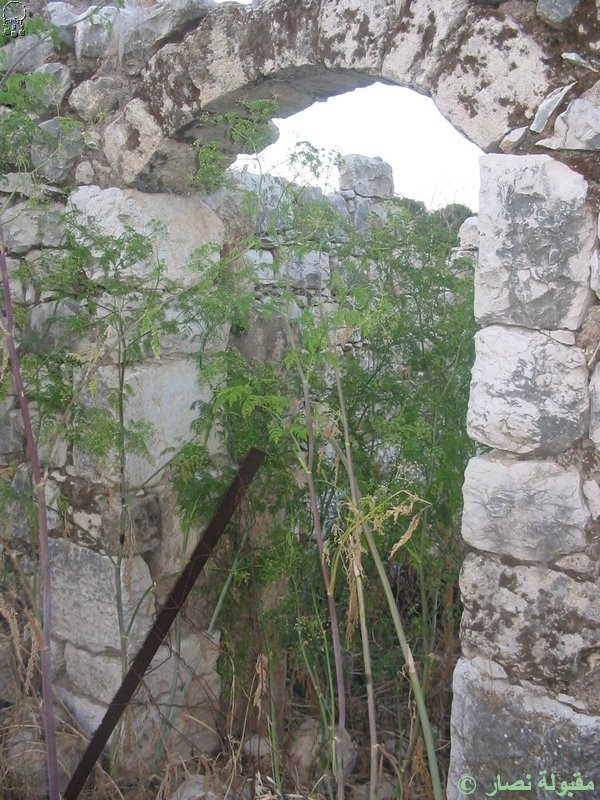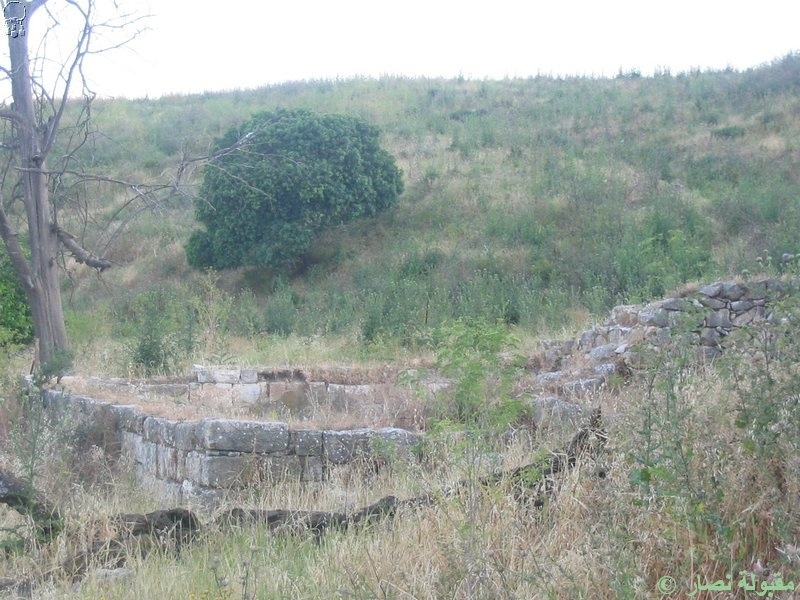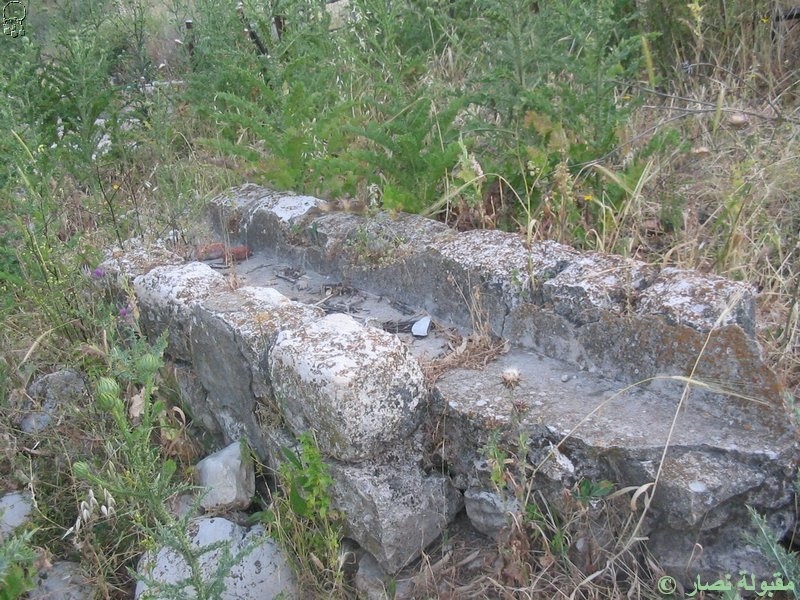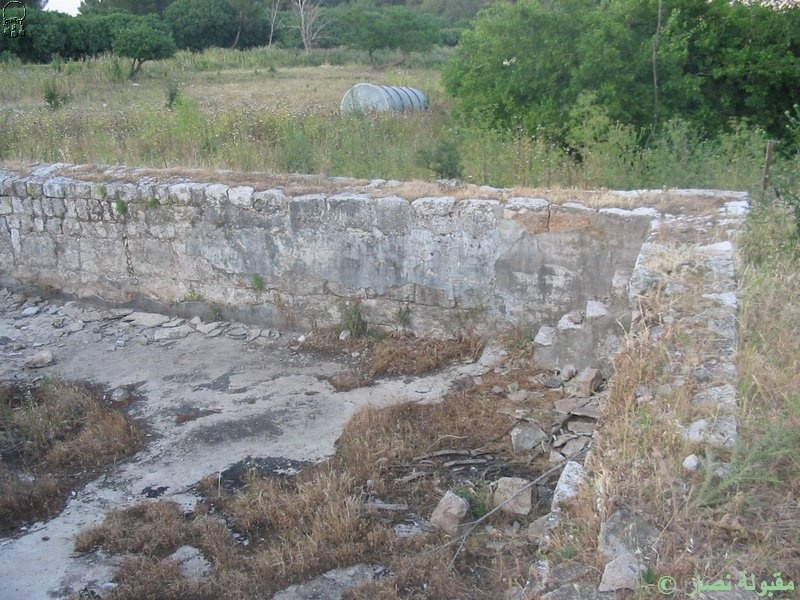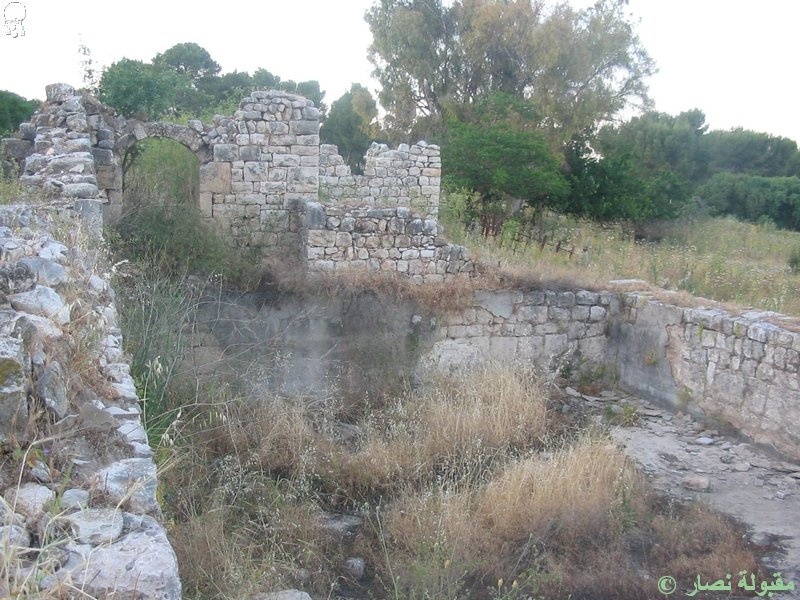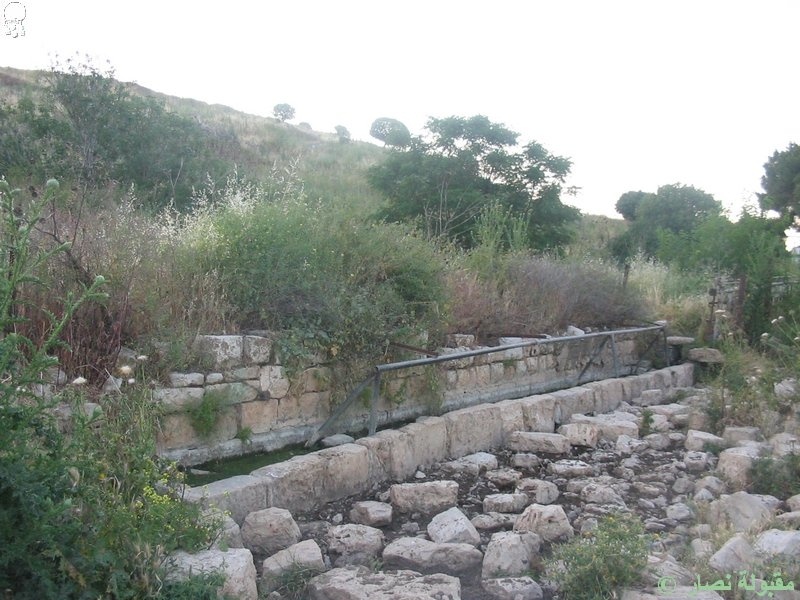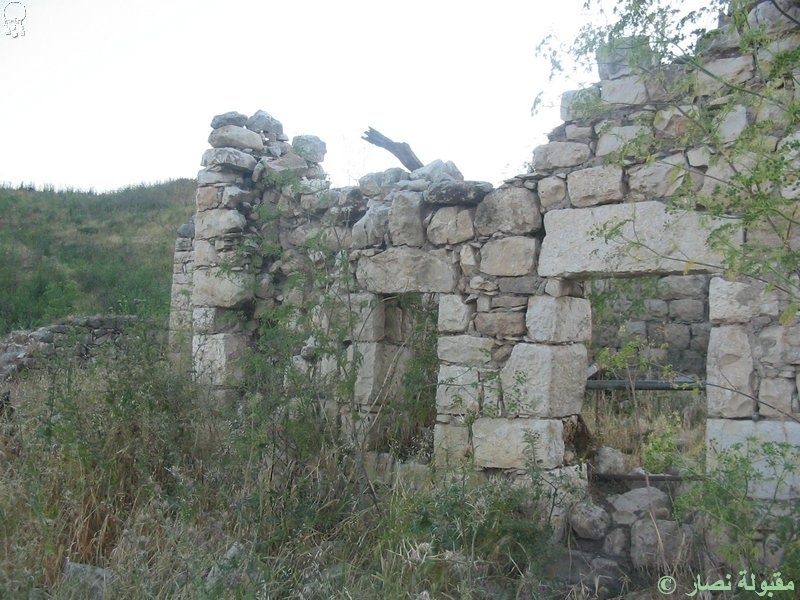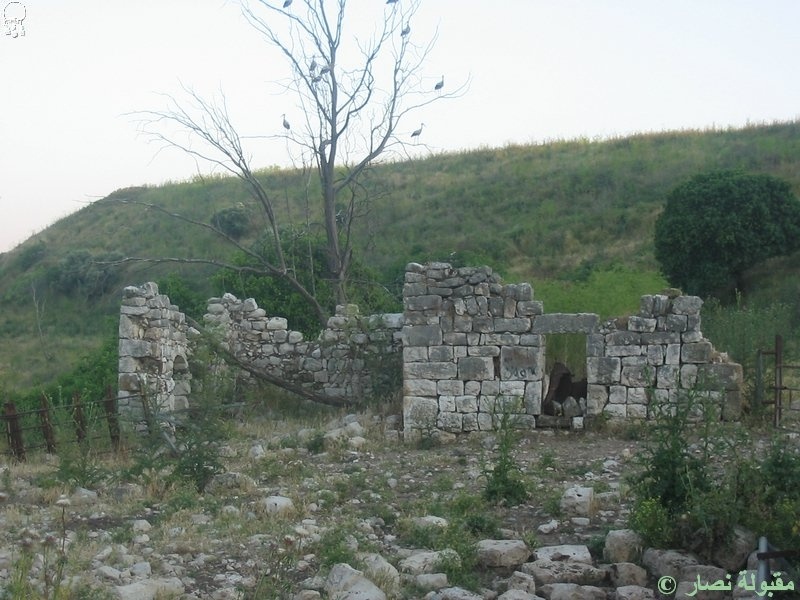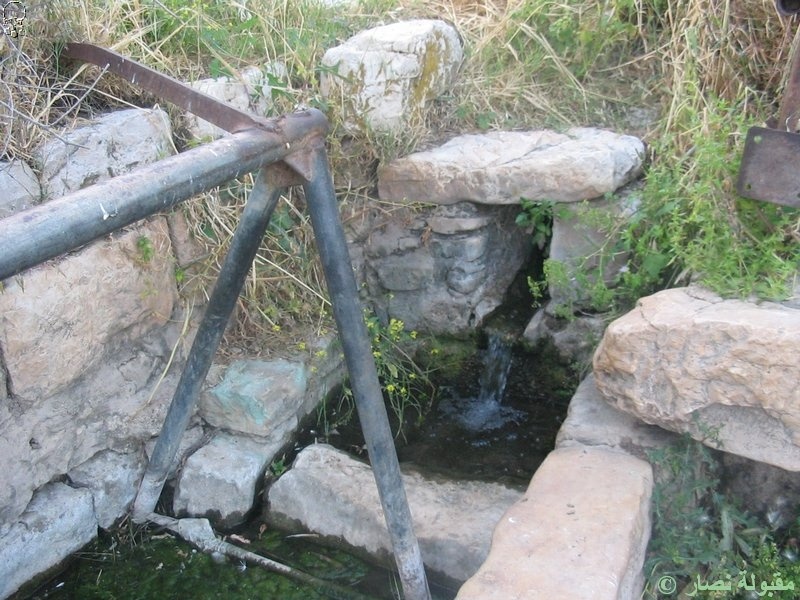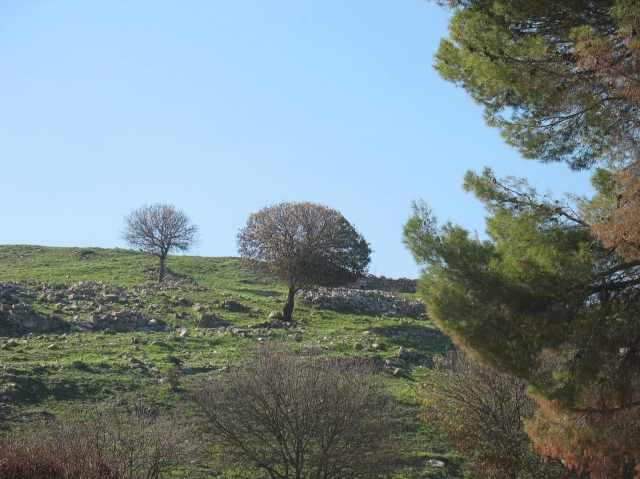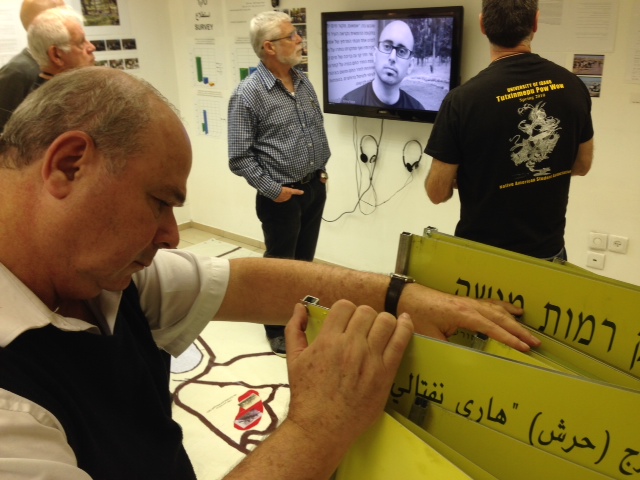Info
District: Safed
Population 1948: 450
Occupation date: 31/10/1948
Jewish settlements on village/town land before 1948: None
Jewish settlements on village/town land after 1948: Yiftach
Background:
Qadas Before 1948
The village stood on a plateau on the edge of a small wadi through which a spring flowed. The villagers obtained water for domestic use from this wadi. A secondary road that passed through the neighboring village of al-Nabi Yusha’ linked it to a highway leading to Safad. Both archaeological and epigraphic evidence indicates that the area just east of the village was an important Roman and Byzantine town. Late nineteenth century British surveys described in detail the surface remains of this early town, and recent excavations have uncovered a Roman temple at the site dated to the first two centuries AD. During the early Islamic period Qadas was a town in what was then the province of Jordan. The Arab geographer al-Maqdisi, writing in AD. 985, described it as a small town on the slope of a verdant mountain, with three springs and a bath beneath the town. Moreover, it had a mosque with a palm tree located in the marketplace. In 1596, Qadas was a village in the nahiya of Tibnin (liwa’ of Salad) with a population of 319. It paid taxes on a number of crops, including wheat, barley, olives, and cotton, as well as on other types of produce and property, such as goats, beehives, orchards, and a press that was used for processing either olives or grapes. In the late nineteenth century, Qadas was described as a stone-built village, situated on a spur of a ridge. The population, which they estimated to be between 100 and 300, cultivated fig and olive trees.
Qadas was part of Lebanon until 1923, when the borders with Palestine were delineated. All of its residents were Muslim. The amount of rainfall in the area and the water from springs was more than sufficient for farming and allowed Qadas to develop a sound agricultural economy, based on grain, fruit, and olives. In 1944/ 45 a total of 5,709 dunums was allotted to cereals and 156 dunums were irrigated or used for orchards. The village had an olive press.
Occupation and Depopulation
After the occupation of Salad on 11 May 1948, the forces participating in Operation Yiftach (see Abil al-Qamh, Safad District) were ordered to move northwards. On the night of 14—15 May, the Palmach’s First Battalion advanced on Qadas and the neighboring al-Malikiyya, according to the History of the Haganah . The account claims that Qadas fell into their hands by the morning, but that Lebanese units crossed the border later that day and mounted a large counteroffensive, forcing the Palmach to withdraw from the village. However, the Lebanese force was stopped at Qadas and advanced no further, because of its heavy losses during the operation and the simultaneous Israeli raids on targets within Lebanese territory The Lebanese army remained in the village for two weeks.
On 28—29 May, after the formal end of Operation Yiftach, the Israelis implemented an elaborate ploy to recapture Qadas and al-Malildyya. The official Haganah account states that they sent an armored column into Lebanon, via another route, and returned southwards towards aI-Mallkiyya, pretending to be a unit of Lebanese reinforcements. Thus surrounded, the two villages soon fell into Israeli hands. But a little over a week later, Lebanese forces regrouped in this sector and made another attempt to take the two villages. Qadas was recap tured on 7June, following the Lebanese entry into al-Malikiyya the previous day, and Arab forces once again had a means of entering the country from Lebanon. The Haganah claims that Arab Liberation Army (ALA) units were soon deployed in central Galilee in anticipation of an Israeli offensive. It is possible that Lebanese and ALA forces remained in the village until after the second truce of the war, when Qadas fell again into Israeli hands during Operation Hiram (see ‘Arab al-Samniyya, Acre District), at the end of October 1948, probably at the same time as al-Malikiyya.
It is not clear when the villagers left, but they may have been driven out by the first attack on 14— to circumstantial evidence gathered by Israeli historian Benny Morris. Shortly after the first attack, a neighboring Jewish settlement (Kibbutz Manara) voiced its designs on the village lands and expressed a desire to seize them, indicating that they were “suitable for winter crops.” Morris adds that this request indicates “an interest in more than ephemeral cultivation.” However, the kibbutz’ wish was probably not granted until the time of the second occupation of Qailas, in October..
Israeli Settlements on Village Lands
The settlement of Yiftach was built in 1948 to the northeast of the village site on lands belonging to Qadas. The village land is used by the settlements of Malkiyya , founded in 1949, and Ramot Naftali , established in 1945.
The Village Today
Stones from the destroyed houses are strewn over the fenced-in site, and a few partially destroyed walls near the spring are visible. A variety of cactuses and trees, including eucalyptus, fig, and mulberry trees, are scattered over the site. The flat portions of the surrounding lands are planted with apple trees; the spring provides drinking water for cattle.
---------------------------
Source: al-Khalidi, Walid (ed.). All that remains: the Palestinian villages occupied and depopulated by Israel in 1948. Washington DC: 1992.


